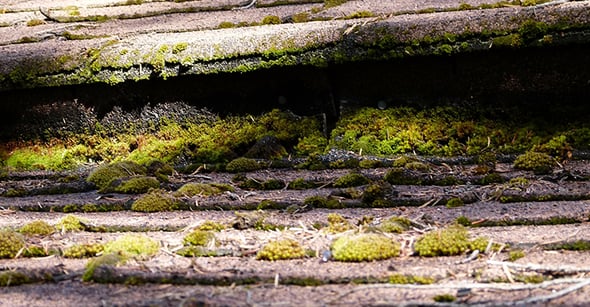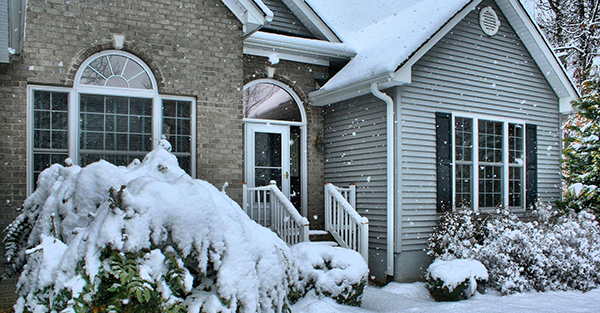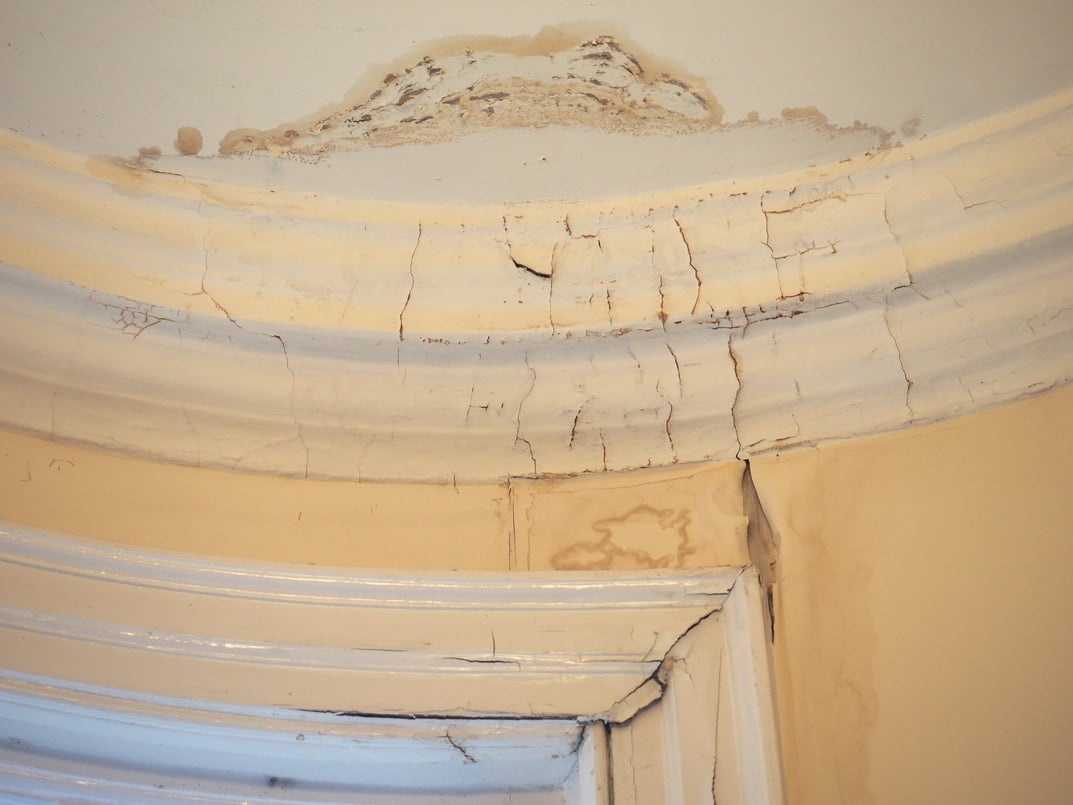Moss and algae can grow on almost every type of roof, particularly in regions that experience humid summers or a lot of rainfall. If a nearby tree casts its shadow on your home for long periods throughout the day, this may also put your roof at risk. Shade allows moss and algae to grow more abundantly than direct sunlight does, so consider trimming back overhanging branches if you notice a problem. With direct sunlight on your roof, moss and algae will be much less likely to grow.

If you see algae or moss growing on your rooftop, have it removed promptly. If you don’t, it can result in serious damage to your home.
Dealing with a Moss Problem
Spores can be blown onto your roof by the wind or transported by animals. Moss can cause serious damage to your home if it is allowed to build up, spread, and thicken. It can grow shallow roots that trap moisture, which is very unhealthy for your roof over time. Moisture can cause your roofing materials to rot and deteriorate, shortening your roof's lifespan and forcing you to replace it sooner. Moss can also break the bond between shingles and lift up the edges, making it easier for water to infiltrate your roof and wind to dislodge shingles.
To prevent progressive problems such as those associated with moss, have your roof inspected once every year.
How to Remove Moss from Your Roof
If you already have moss growing on your roof, remove it as soon as possible. Do not climb on your roof alone. We recommend hiring a professional to do the job for you, but some homeowners can safely do this job themselves. Carefully rake the moss off your roof using a bristle scrub brush. Make sure you rake in a downward motion so you don’t break the seals of your shingles as you work. Once the moss is removed, inspect the condition of your roof. Are granules still intact? If it looks like the interior mat is exposed, have a professional inspect your roof to see if it needs to be repaired or replaced.
Dealing with an Algae Problem
Algae can’t harm a roof like moss can, but they can leave behind ugly black streaks or discoloration. If you see this on your roof, algae has likely been growing there for months already! Since algae don’t have roots, they only live on the surface of a roof so aren’t usually harmful, but they do look bad.
How to Remove Algae from Your Roof
To remove, use oxygen bleach, a powdery substance mixed with plain water. Apply it to the stained areas on your roof on a cool, cloudy day or at a time of day when the sun is notdirectly hitting the rooftop. Only leave the oxygen bleach on for 20 minutes, and then remove it. If you don’t get all the algae off the first time, repeat this procedure.
Preventing Algae and Moss from Growing on Your Roof
There are several measures you can take to prevent moss and algae growth.
- Trim back overhanging branches.
- Immediately clear any debris (branches, leaves, etc.) that lands on your roof.
- Make sure you have a proper ventilation system in place to help keep your roof dry.
- Keep your gutters clear.
- If moss or algae growth is common in your area, ask your roofing contractor about algae-resistant roofing options.
- Conduct periodic roof inspections.
- Have your roof inspected by a professional at least once every year.
Roofing Repairs in Ankeny
If you need roofing repairs in Ankeny, Ames, or Huxley, contact Hedrick Construction! You can give us a call at 515-597-7663 or click the button below to shoot us a quick message, and we'll contact you about scheduling a free estimate!








Comments